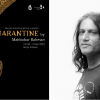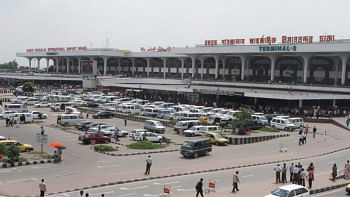Quarantine: A play of size and shapes

The worldwide pandemic that brought about countless deaths also ignited a creative frenzy in people, as our reduced physical movements allowed for more room for thoughts to take physical shapes. Artist Mahbubur Rahman was no exception. During the Covid lockdown, he, along with his skilled team of artisans, created massive art pieces that showcase the artist's journey to research and resurrect lost memories and historical events.

Bengal Shilpalay inaugurated "Quarantine", a solo art exhibition by Mahbubur Rahman, on October 13. The entire gallery has been internally reconfigured to captivate visitors. It features partitions that divide the space for different types of art. The first room, upon entering, showcases "Madonna" – a series of photo-etchings of Rahman and his family, including their four-legged friends. On the other side, there are sculptures made of fabrics and ceramics depicting mundane objects that gained prominence during the pandemic.

The next room is divided into several spaces with purple shades on the walls. In the left corner stands "Homage to Duchamp" – a stainless steel sculpture, a steel-woven sheet with beautiful patterns cast upon a wheel, reminiscent of "Bicycle Wheel" by the French painter and sculptor Marcel Duchamp. Speaking of patterns, "Operation Magic Carpet" consists of a series of steel-made sheets featuring buildings with arches and windows. These pieces somehow reminded me of "Arabian Nights."

Moving on to the next series, the silk embroidery titled "Heroes". Rahman mentioned that during the lockdown, he delved into historical events, and these wall hangings are the results. They depict portraits of feminist heroes such as Lolita Roy – an Indian social reformer and suffragist who worked for women in both India and Britain, Emily Wilding Davison – an English suffragette who fought for women's voting rights in Britain in the early twentieth century, and Millicent Garrett Fawcett, an English politician, writer, and activist who led Britain's largest women's rights association, the National Union of Women's Suffrage Societies, from 1897 to 1919.
Adorning the gallery are three massive pieces. The first one is a circular silk cloth embroidered with countless stitches, called "Temple of Democracy". The second one is a tapestry portraying movements like "Black Lives Matter" and "No farmers, no food," titled "Timeline," as it depicts significant global incidents that occurred during the pandemic. The third enormous piece is on the farthest north-eastern wall – a woodcut with 15 wooden panels, all of which depict pandemic events.

In summary, Mahbubur Rahman's artistry is not only versatile but also satisfying due to the size, shapes, and aura they exude.

Bengal Shilpalay hosted the open-to-all exhibition until Thursday (December 2).

 For all latest news, follow The Daily Star's Google News channel.
For all latest news, follow The Daily Star's Google News channel. 








Comments